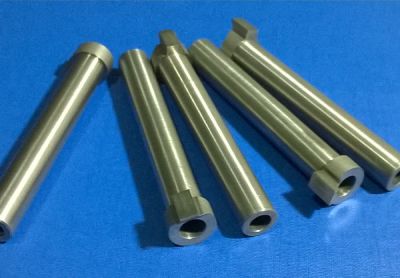Precision parts processing Fast quench hardened steel is hard and fragile, not suitable for most occasions. Through tempering, the hardness and brittleness can be reduced to the degree required by the conditions of use. As these properties decrease, the tensile strength also decreases and the ductility and toughness of steel increases. The tempering operation involves reheating the hardened steel to a temperature below the critical range and then cooling it at any rate.
Although this process softens the steel, it is very different from annealing, because tempering is suitable for strict control of physical properties and in most cases will not soften the steel to the level of annealing. The final structure obtained by tempering a fully hardened steel is called tempered martensite. Due to the instability of martensite, the main component of hardened steel, tempering becomes possible. Low temperature tempering, 300°F to 400°F (150°C~205°C), will not cause a lot of decrease in hardness, and is mainly used to reduce internal strain. As the tempering temperature increases, martensite decomposes at a faster rate and quickly transforms into a structure called tempered martensite at about 600°F (315°C). Tempering can be described as the process of precipitation and aggregation or coalescence of cementite.
The massive precipitation of cementite starts at 600°F (315°C), which reduces the hardness. The rise in temperature will cause the carbides to coalesce and the hardness will continue to decrease. In the tempering process, not only the temperature but also the time must be considered. Although most of the softening occurs in the first few minutes after reaching the desired temperature, if this temperature is maintained for an extended period of time, there will still be some additional hardness drop. The usual practice is to heat the steel to the required temperature and only keep it warm until it is evenly heated.
Two special processes that use interrupted quenching are also forms of tempering. In both processes, the hardened steel is quenched in a selected lower temperature salt bath before it is allowed to cool. These two processes, called austenite tempering and martensite tempering, respectively, can make the product have specific required physical properties.







